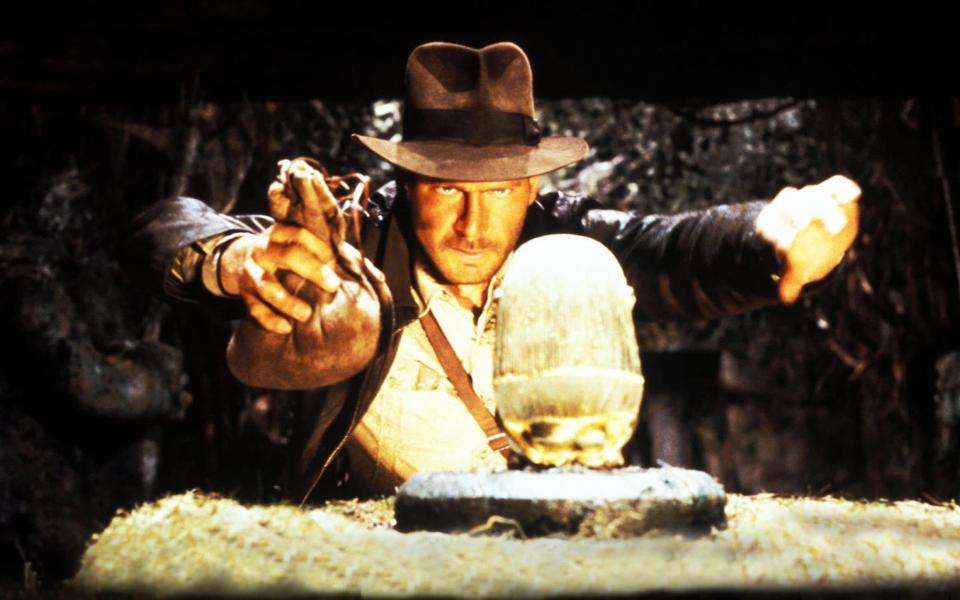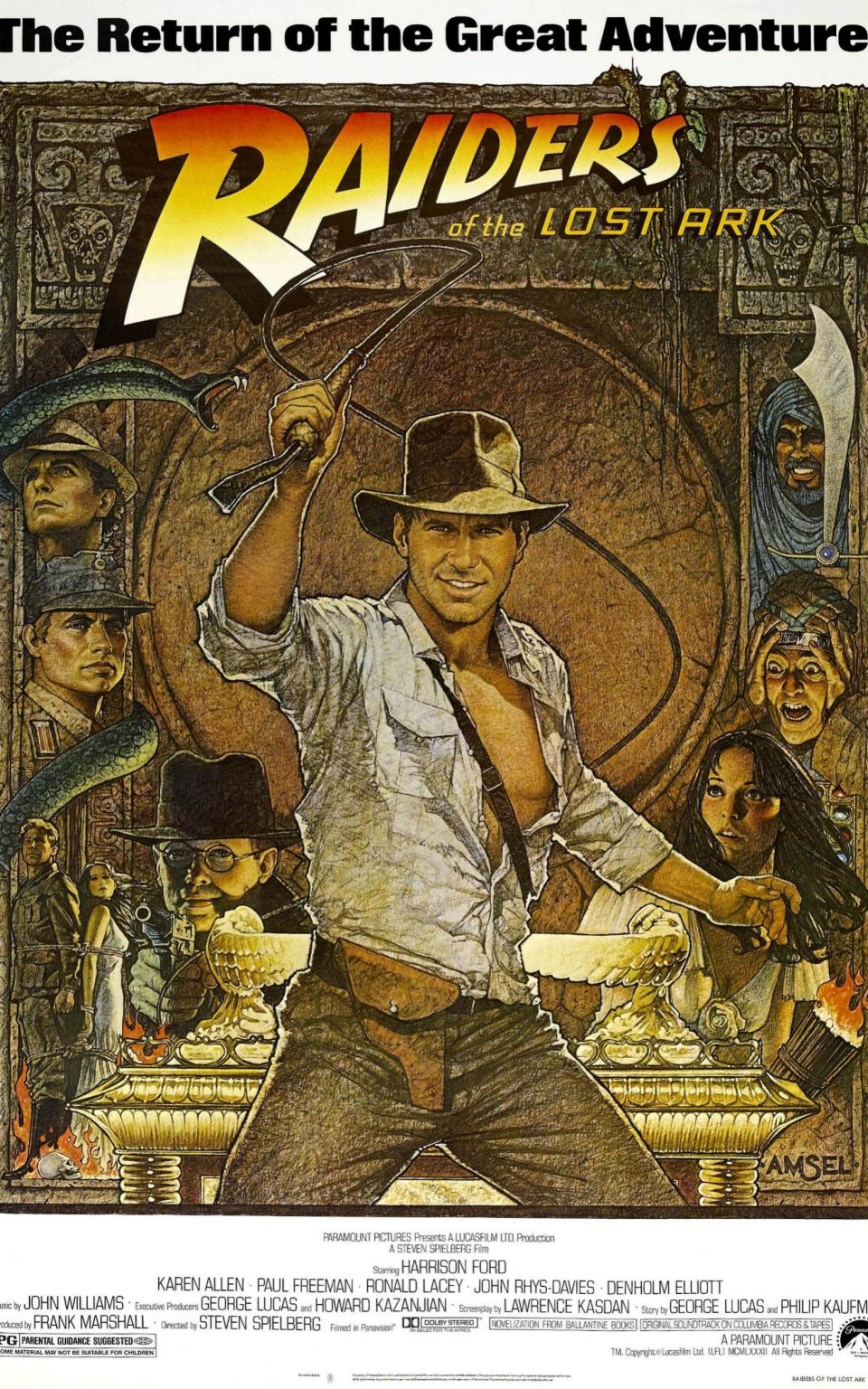How Indiana Jones's cheeky, thrilling Raiders of the Lost Ark heist made movie history

Last week, with Casablanca, we picked one of the all-time great endings. So how about one of the all-time great beginnings? The prologue to Steven Spielberg’s Raiders of the Lost Ark (1981), before the main plot about a Nazi archaeological dig and the fabled Ark of the Covenant, is an immortal introduction to whip-cracking adventurer Indiana Jones and everything his films will go on to offer.
The scene
Here we espy him – at first from behind, just a battered fedora advancing through steaming jungle in Peru, with companions even more desperate than he to find a long-hidden, treasure-filled temple of the ancients. Audiences already knew Harrison Ford from the first two Star Wars films, but Indy – from the first moment when he whips away a treacherous pistol here – would become just as beloved an action hero as Han Solo. A combination of put-on cynicism and endearing fallibility sets him apart.
As he and perspiring guide Satipo (Alfred Molina) advance their way through the booby-trapped tunnel – braving tarantulas, dodging arrows, leaping over a deadly pit – Spielberg gives us a blueprint for the entire thrill ride to follow.
Why is it so good?
Spielberg had always wanted to make “a James Bond film without the hardware” and the character of Indiana Jones (created by George Lucas) allowed for just that. Fittingly, then, this scene is just like the pre-credits adventures Bond had been having – we start in medias res, with no exposition required, and establish an amazing amount in terms of tone, character, stakes and style. Themes of greed and duplicity, and Indy’s reluctant heroics, drive the action. He saves Satipo, a sidekick of dubious loyalty, from tumbling to his death and being feasted upon by furry arachnids. But going in for a hug isn’t his style – note the manly recoil.
His quick thinking puts us in safe hands, but he’s amusingly quick to congratulate himself, too – the smug smile when he thinks he’s gamed the system, by switching a bag of sand on to the plinth where the golden idol rests, is wiped off in seconds when the mechanism gets triggered.
Satipo is promptly punished – impaled in a spike trap; thus establishing the series’ moral universe.
The technique is pure cheek. Spielberg’s editor, Michael Kahn, pushes his luck shamelessly – the door we see dropping rapidly shut, that somehow, in every cut back, has never quite reached the bottom before Indy rolls to safety under it? These stretches in temporal logic heighten the fun by openly teasing us, like many a cliffhanger gambit before them.
Behind the scenes
Spielberg had just suffered his career’s biggest flop with 1941, and studios – more fool them – didn’t trust him and Lucas with a $20 million budget for an untested idea, until Paramount took the plunge. Ford was actually a late replacement for Tom Selleck, who went so far as having costumes fitted, but lost the role because of contractual obligations to Magnum, P.I.
“What we’re doing here is designing a ride at Disneyland,” Spielberg announced during the brainstorming process. Finding a real-life equivalent of the mountain in the Paramount logo – which gives the film its neat first shot – was his idea, and led to a scurry around Hawaii, where the hiking scenes were shot in about 10 different locations.
The temple raid, filmed on set at Elstree Studios, ran into a snag in the scene where live tarantulas were placed all over Alfred Molina’s body – the first shot of his film career. A couple of dozen tarantulas were on him and just sat there immobile. “They look fake!” Spielberg complained. The wrangler had the solution – they were all male, and by inserting a female among them he managed to get them to scuttle competitively and look more alarming. Meanwhile, Oscar-winning sound editor Ben Burtt, already a Star Wars veteran, had a brilliantly simple solution to giving the giant boulder its deadly rumble: he just amplified the sound of his Honda Civic’s tyres rolling across gravel.

Various other trap ideas were storyboarded but not used, including cobwebs across the pit giving the illusion of a false floor, and a crushing wall mechanism triggered by vines. In different guises, these would turn up instead in the sequels, Temple of Doom (1984) and The Last Crusade (1989). Again, the whole sequence functions as such a perfect microcosm of the Indy Cinematic Universe that they would be dipping back into it for years to come.
Reception
Raiders of the Lost Ark still ranks as the “leggiest” film in box office history – that’s to say, the ratio between its opening weekend ($8.3 million domestically) and overall gross ($225.7 million in the USA alone) is the widest, meaning it ran and ran. It was a whopping summer hit that remained a major attraction through winter and into the next spring, and even did healthy business when it was re-released the following July.
It was also, like Star Wars, the rare escapist blockbuster to be a major Oscar threat, getting eight nominations and winning four, for Production Design, Kahn’s editing, Burtt’s sound and Best Visual Effects. (It lost Best Picture to Chariots of Fire, and Spielberg lost Best Director to Warren Beatty for Reds.) Critics adored it, too – well, all except The New Yorker’s Pauline Kael, who devoted much of her review to grumbling about the marketing. Then again, she was sharp enough to spot the fly that disappears, never to be seen again, into the mouth of Paul Freeman’s Belloq, Indy’s arch-rival.
It was thanks to Indy that Ford was cast in Blade Runner (1982). And while the pressure to do a sequel right away must have been huge, Spielberg was thankfully hard at work already on the much-lower-budget E.T. (1982) – not to mention overseeing Poltergeist (1982) – so Temple of Doom simply had to wait its turn.

 Yahoo News
Yahoo News 